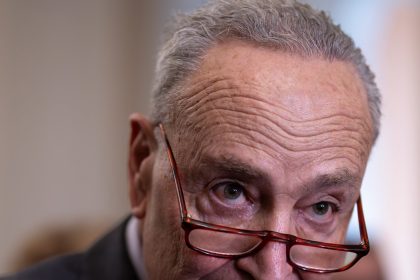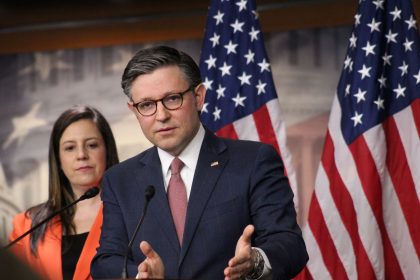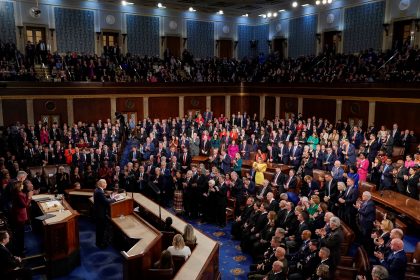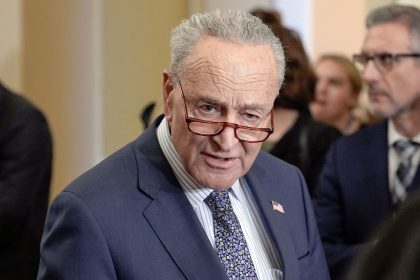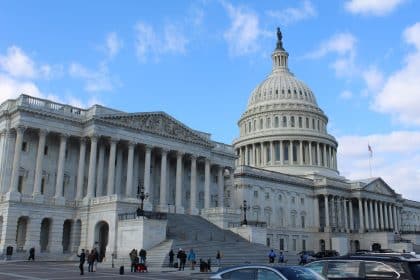One-Two Punch of Economic News Has Budget Hawks Calling for Action
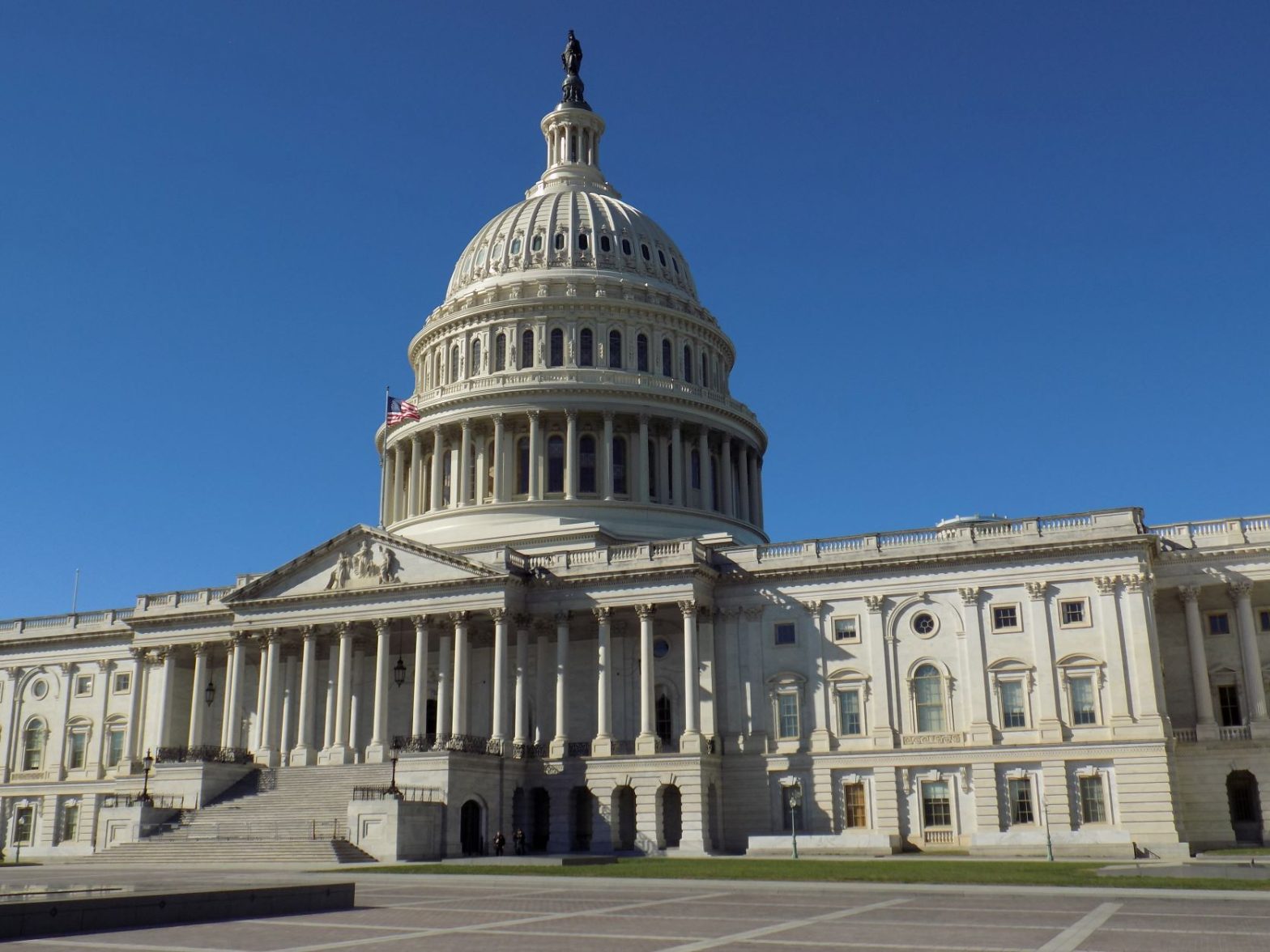
WASHINGTON — The Congressional Budget Office released a long-term economic forecast on Wednesday that has the national debt rising to 185% of gross domestic product in 2052, with interest payments to cover that debt poised to quadruple as a share of the economy within the next 30 years.
If that wasn’t bleak enough news for federal budget hawks, the Federal Reserve on Wednesday raised interest rates by another three-quarters of a percentage point, the latest step in its effort to turn the tide on a surge in inflation that has shown little sign of ebbing.
The central bank’s policy rate, which is the interest rate banks pay to borrow when they fall short of their required reserves, is now set to a range of 2.25%-2.5%.
The hope among the bankers, who voted unanimously for the increase, is that the ripple effect, in terms of pricier bank and other loans to consumers will slow the economy enough to cool it and send inflation tumbling.
The Federal Reserve began raising interest rates from near zero in March, raising its policy rate a quarter of a percentage point. Since then, it has raised the rate by half a percentage point in May and by three-quarters of a point in June.
In a statement, the policy-setting Federal Open Market Committee said that it “anticipates that ongoing increases in the target range will be appropriate.”
But it was the CBO report that caused the most consternation Wednesday afternoon, the clincher being that the interest payments on the nation’s debt will be the largest government expenditure — far surpassing even the defense budget — by 2049.
The agency’s much anticipated annual report presents its budget projects and economic forecast for the next three decades under the assumption that current tax rates and the rate of government spending generally do not change.
“Today’s CBO report may not be a surprise, but it should be alarming for all of us,” said Michael Peterson, CEO of the Peter G. Peterson Foundation, a nonpartisan organization based in Washington that works to promote action on the nation’s long-term fiscal challenges.
“The report shows that America remains on a completely unsustainable fiscal path, with 30 years of trillion-dollar-plus deficits in a row, and our debt growing to twice the size of the economy,” he said.
“The current economic and inflation uncertainty should be a reminder of why it’s so dangerous to have a precarious fiscal outlook in the first place,” Peterson continued. “High inflation, rising interest rates and recession fears are all more concerning and more difficult to address with an underlying challenge of high debt and deficits.
“On a day when the Federal Reserve continues its important work to fight inflation, the danger that growing interest costs pose to our nation’s future couldn’t be more clear,” he added.
Some Clear Skies, Then Rain
At 3.9% of gross domestic product, the projected deficit in 2022 is much smaller than those recorded in 2020 and 2021, because federal spending in response to the coronavirus pandemic has waned and revenues have risen sharply, the Congressional Budget Office said.
But when its statisticians cast their gaze to the future, things quickly grow dark.
For instance, they project that federal deficits will average about 7.3% of GDP between now and 2052 — more than double the average over the past half-century.
The agency said the projected growth in total deficits is largely driven by increases in interest costs. It is predicting interest outlays will rise to 7.2% of GDP in 2052.
Primary deficits — that is, deficits excluding net outlays for interest — will grow from 2.3% of GDP in 2022 to 3.9% in 2052.
The Debt Crunch
By the end of 2022, federal debt held by the public is projected to equal 98% of GDP.
The rapid growth of nominal GDP — which reflects both high inflation and the continued growth of real GDP (that is, GDP adjusted to remove the effects of inflation) — will help hold down the amount of debt relative to the nation’s output in 2022 and 2023, the agency said.
However, the CBO projects that debt as a percentage of GDP will begin to rise in 2024, surpassing its historical high in 2031 (when it reaches 107%), and will continue to climb thereafter, rising to 185% of GDP in 2052.
“Debt that is high and rising as a percentage of GDP could slow economic growth, push up interest payments to foreign holders of U.S. debt, heighten the risk of a fiscal crisis, elevate the likelihood of less abrupt adverse effects, make the U.S. fiscal position more vulnerable to an increase in interest rates, and cause lawmakers to feel more constrained in their policy choices,” the executive summary of the report said.
Maya MacGuineas, president of the Committee for a Responsible Federal Budget, a nonprofit public policy organization based in Washington, D.C., that focuses on federal budget and fiscal issues, was as direct as could be in her assessment of the CBO’s conclusions.
“We’re entering uncharted territory,” she said.
“Rising interest rates are fanning the flames of this already dangerous situation. Assuming relatively low rates, interest will hit a record 3.3% of GDP by 2032 and more than double that record by 2052,” MacGuineas continued. “By 2049, interest will be the single largest federal government expenditure, and in combination with health and retirement spending it will make up nearly three-quarters of the budget by 2052.
“If interest rates follow CBO’s higher interest rate path, debt would reach 235% of GDP,” she said. “And if policy followed CBO’s costly alternative scenario, debt would increase to 262% of GDP by 2052.
“All this is a reminder to those who argued we should amp up our borrowing in years past because rates would always remain low that this was a dangerous bet with real consequences,” she said, adding, “Today’s outlook is all the more reason we need a deficit-reducing reconciliation package focused on generating budgetary savings and controlling inflation. We need to take action today, before debt and interest costs spiral out of control.”
Income and Outflows
The CBO projects that revenues will rise to 19.6% of GDP in 2022 — one of the highest levels ever recorded — because of sizable increases in collections of individual income taxes. After falling in relation to the size of the economy for the next few years, however, an anticipated increase in revenues in 2026 will largely be due to scheduled changes in tax rules. They will continue to rise after 2030 as an increasing share of income is pushed into higher tax brackets. In 2052, revenues are expected to reach 19.1% of GDP, the agency said.
As for spending, the CBO projects outlays in 2022 will come to about 23.5% of GDP — less than last year’s total — and they will continue to decline in 2023 and 2024 as federal spending in response to the pandemic diminishes.
But it says expenditures will then steadily increase, reaching 30.2% of GDP in 2052.
Rising interest costs and growth in spending on the major health care programs and Social Security — driven by the aging of the population and growth in health care costs per person — are expected to boost federal expenditures significantly over the 2025-2052 period.
MacGuineas said taken as a whole, the message of the CBO report is that “it is well past time for policymakers to work together to get our fiscal house in order.”
Michael Peterson was of a similar mind.
“The good news is that our budget is fully within our own control, and lawmakers have plenty of good solutions available to set us on a better course,” he said. “In the near term, deficit-reducing policies could not only help our fiscal picture, but could serve as a complement to monetary policy to help relieve inflationary pressure.
“Over the long term, our leaders should work together on bipartisan solutions to address the long-known structural drivers of our debt: health care costs, demographics, compounding interest, and a revenue base that is inadequate to fund the promises we’ve made,” he continued.
“We must find a better path to become better prepared and well-positioned for America’s future. Our record high national debt threatens our economic strength, our leading role in the world, our ability to invest in the next generation and our capacity to withstand and respond to future crises, whatever they may be,” Peterson said.
Dan can be reached at [email protected] and @DanMcCue

















